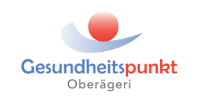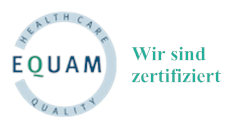First considerations
The "Gesundheitspunkt Oberägeri" project arose out of the need to maintain basic family doctor services for the community of Oberägeri. In the lead-up to implementing a joint practice in a new location, my colleague and I determined that in today's rapidly changing healthcare environment, we needed to develop a methodical and proactive approach to caring for our patients - a "systems approach" to primary care.
The question that arose was: How do we provide the best care for all patients registered with us, not just those who actively visit our center?
Systems approach:
The systems approach we were looking for was found in "value-based care." The goal of value-based care is to promote a health system that puts the patient at the center of all decisions and promotes coordinated care, bringing together the concepts of population health, patient-centered care, and improved quality.
In the "systems approach" used in the Gesundheitspunkt, we collect and analyze data that helps us,
- Identify those in need of care,
- divide into groups (e.g. healthy, diabetic, rheumatic, etc.) and monitor them,
- Implement the latest recommendations and care guidelines related to these groups,
- Involve our entire interprofessional practice team consisting of physicians, MPAs, MPKs, nurse practitioner, social worker, occupational therapist in a quality improvement process.

Implementation concept

The goal of our concept is to make the general components of our comprehensive health care and their relationships to each other clear to the Gesundheitspunkt team and registered patients. The concept represents the classification into patient groups, health assessment and assignment to risk levels necessary for our care. The core of the model (central blue box) includes the continuum of care (purple) and patient-centered interventions. The patient is at the center of the model and is surrounded by various intersecting supports that can have an impact on their health. These include our practice organization, specific actions taken by our care team, and family and community resources. The use of these opportunities leads to concrete (operational) measures and these in turn to results, the key areas of which are shown, as is the cycle of quality improvement based on process and results evaluation (green arrows).
Our process model
The process model shows how we intend to implement our concept. It outlines the process flow, beginning with categorizing and tracking patient groups and identifying individual patients eligible for an activity or intervention. It also includes a health assessment, followed by assignment to at-risk groups, use of engagement strategies, availability of various (electronic) communication and delivery modalities, and patient-centered interventions across the continuum of care.

Assessment of the state of health
The "health status assessment" process step in our process model includes efforts to assess the health status of a specific patient population (e.g., diabetic, etc.). This assessment is performed in the Gesundheitspunkt by evaluating available electronic information such as master data, billing, medication, agenda, and laboratory data, as well as an analysis of information documented by the treatment team. Our ability to combine and analyze this data is an important part of this step in the process and also a prerequisite for guideline-based care.
Risk stratification
The next step in our flow model is to assign patients to meaningful categories in order to plan patient-centered interventions in favor of these groups based on the information gathered in the health assessments. This process provides the information we use to classify patient groups into different risk classes, allowing us to deploy our available resources adequately and cost-effectively.
Patient centered interventions
Patient-centered interventions can only happen if you can "sell" them to the patient. Whenever possible, the components of patient group-based health care can and should be brought to the patient through a variety of communication tools and measures. The Gesundheitspunkt currently uses telephony, email and its home page to improve the resources and outreach of the care team. This must take into account patient preferences and technical capabilities with the ultimate goal of increasing patient engagement and supporting patient self-management.
Quality improvement process
We run a quality improvement process in both concept and process model. Our quality improvement cycle includes changes to both interventions/measures and processes (including health assessments, risk stratification, and patient engagement strategies) based on lessons learned from operational measures, as well as outcomes achieved. Our process emphasizes the patient voice as part of the data collection process, which should lead to improved patient satisfaction.
Our figures from 2022
Treatable risks
Chronically ill

Praise? Annoyance? Suggestion?
Your opinion matters!

